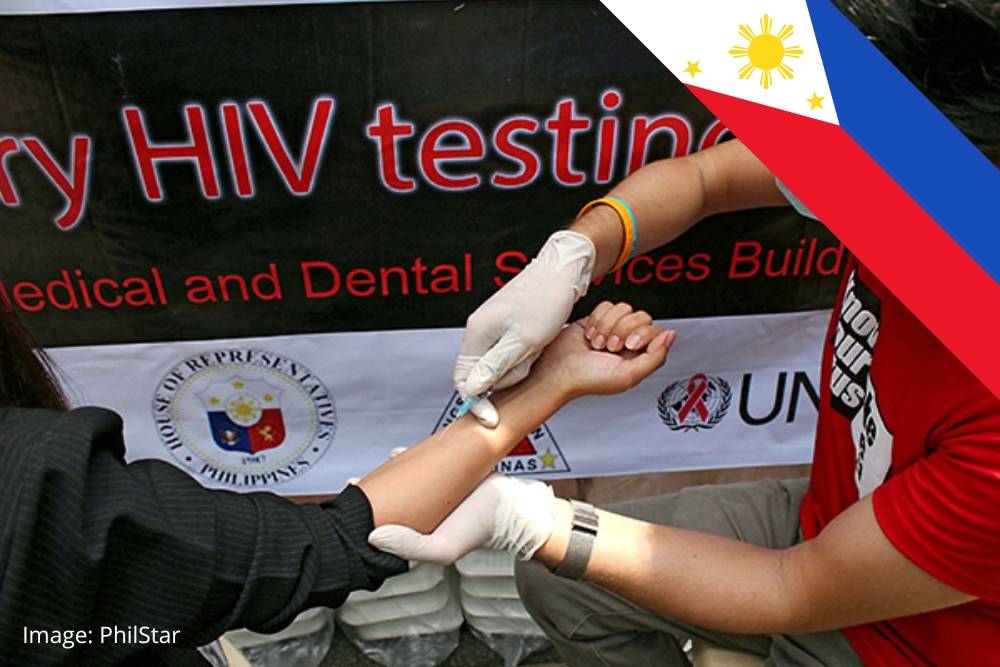While HIV/AIDS programmes have traditionally focused on older demographics, a new initiative in the Philippines points to the importance of directly involving youth leadership in the battle against the disease.
In a significant step towards addressing the HIV epidemic, free HIV testing is now available through selected Sangguniang Kabataan (SK) leaders in Quezon City. This initiative is part of the “Hakdaw Kabataan” project, a collaborative effort involving multiple programmes in the Philippines. These programmes include the Joint United Nations Programme on HIV/AIDS Philippines (UNAIDS), HIV & AIDS Support House (HASH), and the Quezon City SK Federation. It aims to equip young leaders with the tools and knowledge necessary to lead the fight against HIV and AIDS within their communities.
The “Hakdaw Kabataan” Project
Under the “Hakdaw Kabataan” project, over 140 barangays in Quezon City have seen their SK leaders undergo extensive training to become Community-Based Screening Motivators. They learned how to administer HIV tests, handle and protect data, and even offer motivational counselling to individuals undergoing testing. These leaders are able to provide vital HIV testing services free of charge under this programme, making testing more accessible to the public.
According to Desi Andrew Ching, Executive Director of HASH, involving youth leaders in this critical health initiative is a significant step forward. “This empowers them to actively participate in the testing efforts within their communities,” he said. He believes that with such youth-led HIV initiatives in place, the “Hakdaw Kabataan is a significant move toward creating a generation free from HIV stigma.”
Promoting the U=U Campaign
A key component of the “Hakdaw Kabataan” project is promoting the U=U (Undetectable = Untransmittable) campaign within the community of Persons Living with HIV (PLHIV). When the viral load is undetectable, HIV cannot be transmitted to sexual partners (untransmittable). When the treatment works and viral levels are very low, PLHIV do not need to fear spreading HIV even if sexually active.
U=U is a powerful idea to change how communities and individuals see HIV. It shows that stigma against HIV is wrong and that treatment works. With this in mind, PLHIV can feel more in control of their health and relationships. They can also feel more motivated to start on and adhere to antiretroviral therapy (ART) to reduce their viral load to undetectable levels.
Ching highlighted the role of youth leaders in spreading the U=U message, especially through social media. “We recognise the youth’s ability to effectively use social media, and we believe they can play a significant role in spreading the U=U concept. This effort is crucial to reach out to PLHIV who are not yet undergoing antiretroviral therapy. As this could lead to a worsening of their condition,” he explained.
Addressing the HIV Epidemic Among the Youth
With disproportionate infection rates among youths, the HIV conversation must adapt to stay relevant for this population. According to the Department of Health – Epidemiology Bureau, from October to December 2023, 3,738 HIV cases were recorded, with 1,115 of these cases being individuals aged 15 to 24 years old.
Read more: Surge in HIV Cases Among Filipino Teenagers
UNAIDS Philippines Country Director, Dr. Lui Ocampo, emphasised the need for youth participation in HIV-related discussions and initiatives. “The HIV problem is a significant issue among our youth today. So it is only fitting that young people are involved in discussions, the development of programmes, and initiatives to address this problem,” Dr. Ocampo said.
The Future of HIV Care
The success of the “Hakdaw Kabataan” project in Quezon City has prompted HASH to consider expanding the campaign to other SK federations across the country. This expansion aims to ensure that more young people are involved in HIV prevention efforts and that free HIV testing becomes widely accessible.
Dr. Ocampo also encouraged the SK Federation to use the funds allocated to SK initiatives for HIV-related programmes to ensure their sustainability. “Through this project, in partnership with Quezon City, we aim to engage the Sangguniang Kabataan Federation not only in creating programmes and plans that incorporate HIV-related components, but also in implementing those programmes through their leadership,” Dr. Ocampo added.
On the medical side, there have been great advancements in HIV/AIDS medical research and treatment over the years. Traditionally, antiretroviral therapy (ART) regimens for HIV involve a combination of drugs selected based on each patient’s individual needs. Patients need to take their prescribed HIV medicines every day, exactly as prescribed, for the treatment to be effective. “Having to remember to take that medication every day is a problem.” shares Dr Deano Reyes, an LGBTQ health and sexual health specialist at Pulse Clinic, Metro Manila.
https://www.instagram.com/reel/C0TOacittge/?hl=en
He shares, “The new technology that we’re seeing is there is an injectable option for our patients…They just have to do this once every two months and they will have the same effect (as traditional antiretroviral therapy)”
Initiatives like Hakdaw Kabataan are pivotal in engaging youth and increasing the accessibility of life-saving services, complementing the great strides in HIV/AIDS research that continue to improve treatment outcomes and quality of life. Together, multifaceted community and clinical approaches offer greater hope of ending stigma and effectively controlling the HIV epidemic in the Philippines over time.

